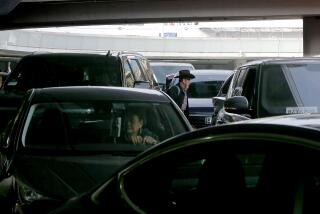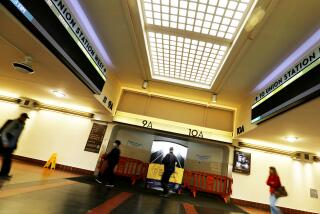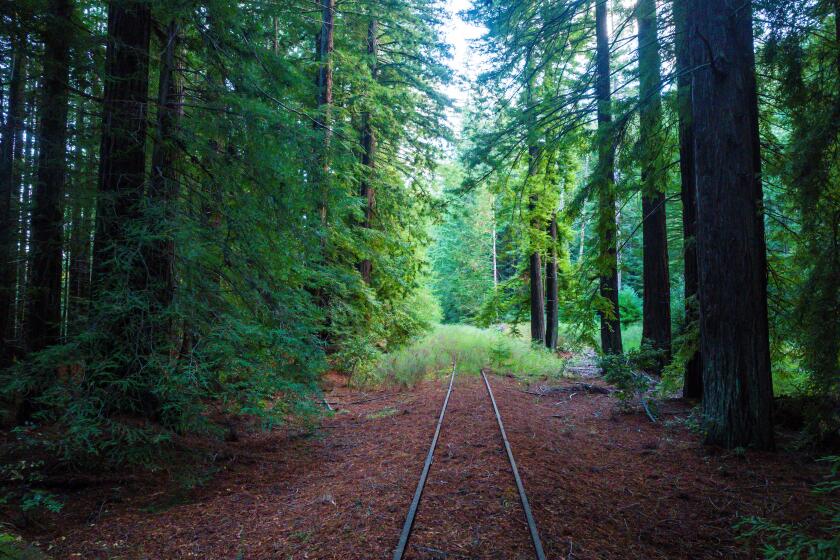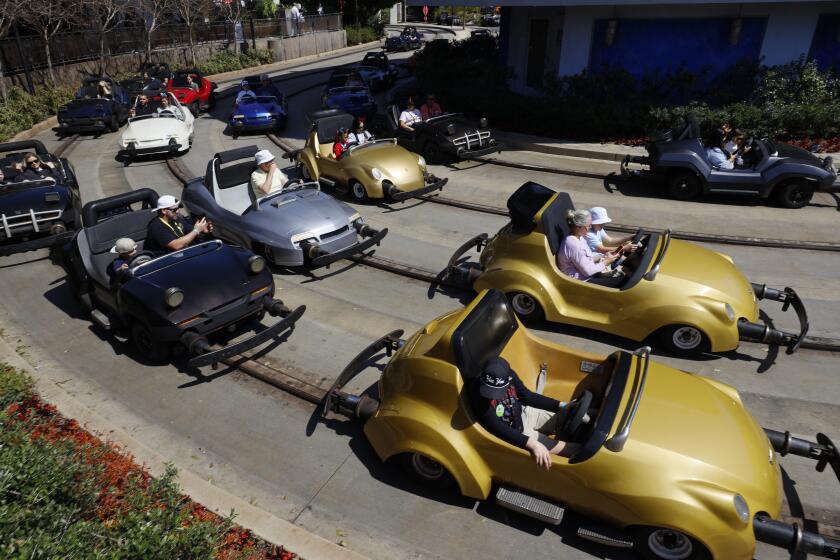L.A. Metro is running fewer Expo Line trains. Riders say they feel like sardines
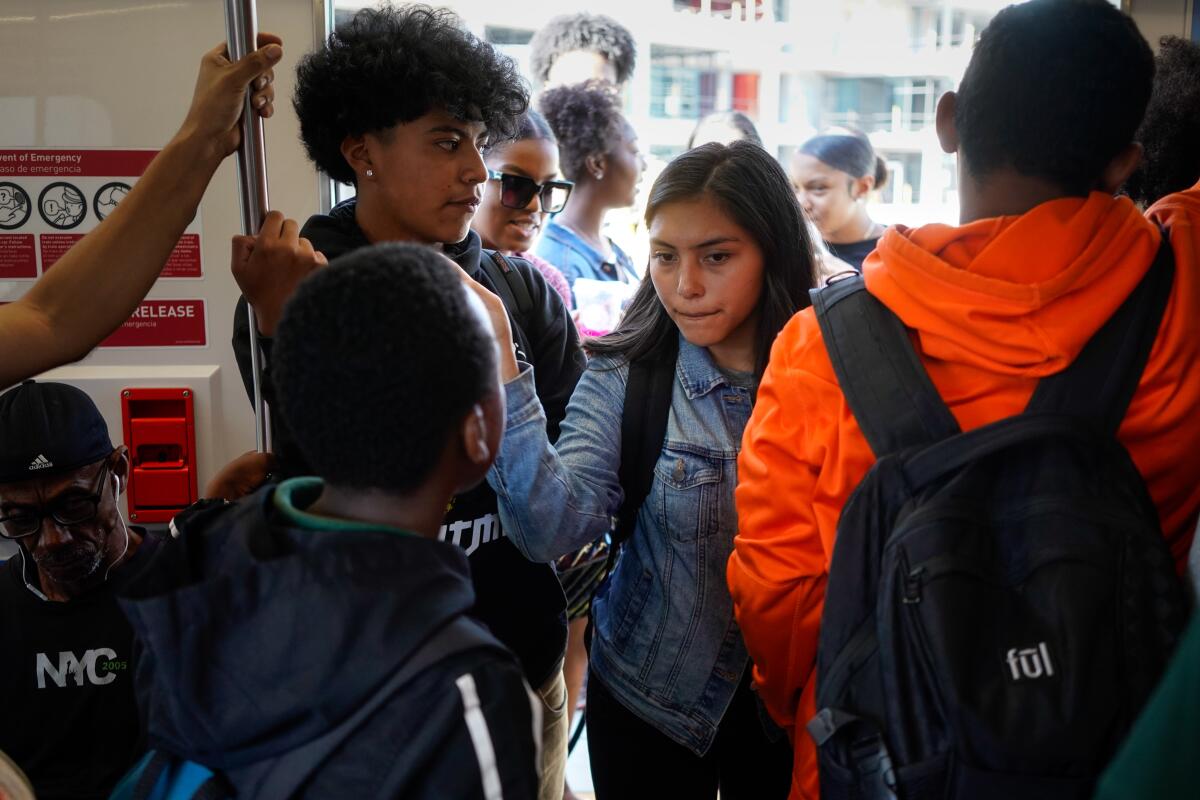
Riding home on the Expo Line used to be an opportunity for Eva Vieyra Osmand to spend some quality time with her 5-year-old son.
That ended three weeks ago, when the eastbound trains they boarded in the afternoon were suddenly packed to the point of discomfort.
“It was a point of pride that, as a fourth-generation Angeleno, I was raising a kid who was an expert train rider,” Vieyra Osmand said. “He used to love it. Now he’s afraid.”
At the end of August, Metropolitan Transportation Authority officials cut rush-hour service on the Expo Line, increasing the wait time between trains from six minutes to eight minutes. The change eliminated two trains per hour during peak periods on the line, which carries 60,000 daily riders between downtown and Santa Monica.
Since the cuts, complaints about hot, crowded, smelly commutes have flooded social media. Some trains have been so crammed that passengers with bicycles, wheelchairs and strollers have been stranded on platforms. Commuters squished into one another wear backpacks, earbuds and thousand-yard stares.
During one recent ride, Vieyra Osmand said she watched a passenger grab on to another rider to avoid falling onto the platform when the train doors opened.
Aside from the discomfort, riders say they fear that cramped conditions on Metro’s flagship new rail line could drive people away from the transit system and back to their cars, adding to the agency’s plummeting ridership.
“It sends a bad message to not make it a better experience,”said Ken Lipman, 62, a television production executive at Amazon Studios who takes the train from downtown to Culver City.
Lipman said Expo Line trains have been more crowded than anything he experienced in New York, where he lived for three decades. After missing two trains in a row that were too crowded to board, and feeling claustrophobic on a packed train that stopped between stations, he said, he has started driving more.
Many Angelenos with nasty commutes are at least willing to give transit a shot, Lipman said, but “if they have one or two unpleasant experiences ... it’s hard to get them to stay with the program.”
Last week, Metro officials responded to complaints by restoring some train service during the busiest single hour of morning and afternoon rush hour. The changes have done little to alleviate crowding outside the hours of 6:30 a.m. and 7:30 a.m., and 5 p.m. and 6 p.m., riders say.
“I am hearing from some very disgruntled people who feel like they’re sardines,” said Los Angeles City Councilman and Metro board member Mike Bonin at a Metro meeting last week, urging officials to restore more service. “They’re finding this not a pleasant experience at all. ... I’m really concerned.”
Metro aims to operate the Expo Line at about 175% of seated capacity, meaning about 90 people are seated and 70 people are standing, said Metro chief operations officer James Gallagher. The agency is watching the line daily, he said, and will restore more service if it’s necessary.
Since the extra trains were added last week, Gallagher said, he’s received “no feedback” about the crowding on the line.
The service cuts were rolled into the $7.2-billion budget that Metro’s directors approved in May. The budget included a 5.7% reduction in the number of hours that trains operate across the Metro system.
Cuts took effect quickly on the Gold Line, where wait times for rush-hour trains increased from six minutes toseven minutes. So far, officials said, they are not seeing major discomfort or crowding on the line from the San Gabriel Valley to East Los Angeles.
Cuts were delayed on the Expo Line by a two-month closure of two stations in downtown, part of a major renovation of the Blue Line. On Aug. 24, the same day that the stations reopened, the Expo Line service cuts began.
Although the cuts did save money, they were intended to make the line run more smoothly, said Metro senior executive officer Conan Cheung.
“We budget what we need to run,” Cheung said. If trains run slightly less often, a breakdown or a delayed train is less likely to cause cascading delays on the line, he said.
Running fewer trains could also mean a smoother entry into downtown for eastbound Expo Line trains, which often are forced to wait at a crowded rail junction shared with the Blue Line.
Metro cannot run light-rail trains with more than three cars because the platforms aren’t long enough and the overhead power systems aren’t robust enough.
Metro also faces operational challenges along the street-level portion of the Expo Line through Exposition Park, where trains must wait at traffic lights. Because the signals run on 120-second cycles, Metro trains move fastest through the area if they run at even-numbered intervals of six minutes, eight minutes or 10 minutes, Cheung said.
The most frequent service Metro could operate on the Expo Line is a three-car train every five minutes during rush hour, he said, but the signal timing precludes that.
Metro had originally proposed a slight reduction in the number of hours that buses were on the streets, meaning riders on some bus lines could have seen longer waits between buses and more crowded vehicles once they boarded.
After advocates voiced concerns that cuts could further decimate Metro’s bus ridership, Metro agreed to leave bus service unchanged this fiscal year.
More to Read
Start your day right
Sign up for Essential California for news, features and recommendations from the L.A. Times and beyond in your inbox six days a week.
You may occasionally receive promotional content from the Los Angeles Times.
